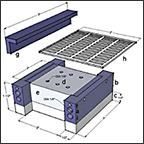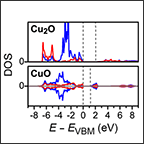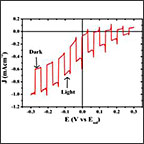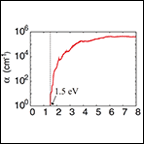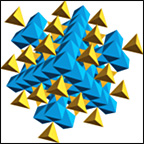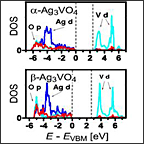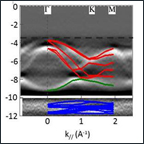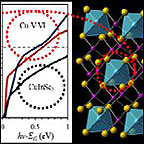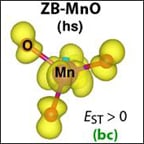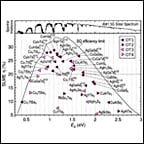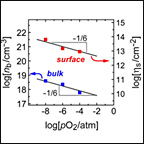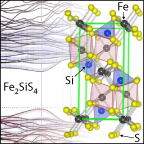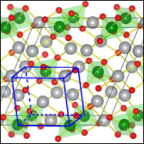Center for Inverse Design Highlights
Read short descriptions of some recent successes by researchers within the Center for Inverse Design, an Energy Research Frontier Center led by the National Renewable Energy Laboratory.
Spatially Resolved Seebeck Coefficient Measurements
Accurate Band-Structure Calculations for the 3d Transition Metal Oxides
Earth-Abundant Cu-based Chalcogenide Materials as Photovoltaic Absorbers
The Center for Inverse Design demonstrated photovoltaic conversion for the first time in Cu3PSe4, a member of the Cu3MCh4 (Ch = S,Se; M = P, As, Sb) materials family, identified using the inverse design method as absorber candidates that have stronger solar absorption than CuInSe2.
KAg11(VO4)4 as a Candidate p-Type TCO
The Center for Inverse Design predicted—and synthesized and characterized—KAg11(VO4)4 in the group of silver vanadates as a new candidate p-type conductor with an absence of intrinsic hole-killing defects and moderate transparency. This new compound complies with the d10 design rule for p-type transparent conducting oxides.
Anti-Site Defects in p-Type Co2ZnO4: Better than Perfect
The Center for Inverse Design (CID) has demonstrated that intrinsic anti-site defects actually improve electrical properties of Doping Type II spinels, in agreement with prior CID prediction.
Silver Vanadates: A New Class of Computationally Designed p-type Transparent Conducting Oxides
The Center for Inverse Design identified silver vanadates as a new class of p-type conductor, which are free from intrinsic hole-killing defects and have moderate transparency. β-Ag3VO4 was synthesized and measured at high temperature.
Benchmarking Band-Structure Calculations Against Angular-Resolved Photoemission Spectroscopy (ARPES) for ZnO
In studying zinc oxide, Center for Inverse Design researchers have found that the discrepancy between band-structure theory and angular-resolved photoemission spectroscopy (ARPES) is removed by a correction for the Zn-d band energy in GW calculations.
Inverse design of high-absorption thin-film photovoltaic materials
Researchers in the Center for Inverse Design have identified some potential Cu-V-VI thin-film photovoltaic absorber materials that have stronger solar absorption than CuInSe2 and have revealed a general structure-property (absorption) relationship.
Design Principles Demonstrated for Semiconducting d5 Transition-Metal Oxides with Photovoltaic Applications Potential
The Center for Inverse Design scientists used theory to predict band structure and transport properties for the d5 transition metal oxides MnO and Fe2O3.
New selection metric for design of thin-film solar cell absorber materials
The Center for Inverse Design has developed "spectroscopic limited maximum efficiency" (SLME) as a new and calculable selection metric to identify the new and/or improved photovoltaic absorber candidate materials for thin-film solar cells.
Enabling practical p-type doping in oxide spinels
The Center for Inverse Design has identified a class of metal oxide spinels—typified by Co2ZnO4—that have no intrinsic hole-killers and hence enable unopposed p-type doping in easily grown materials.
Anomalous surface conductivity in In2O3 transparent conductors
Scientists in the Center for Inverse Design observed a dramatic new property in the class of transparent-conducting contacts that may significantly and beneficially change the way in which they are used in solar cells, displays, and low-e windows.
Iron chalcogenides as photovoltaic absorbers
Center for Inverse Design researchers have developed and implemented design rules to identify the new Earth-abundant ternary compounds Fe2SiS4 and Fe2GeS4 as promising photovoltaic absorber materials that avoid the performance problems of FeS2.
Ag3VO4 as new p-type transparent conducting material
Using systematic design principles, the Center for Inverse Design is exploring a new class of ternary p-type transparent conducting oxides, including the prototypical Ag3VO4 entry-point material.

